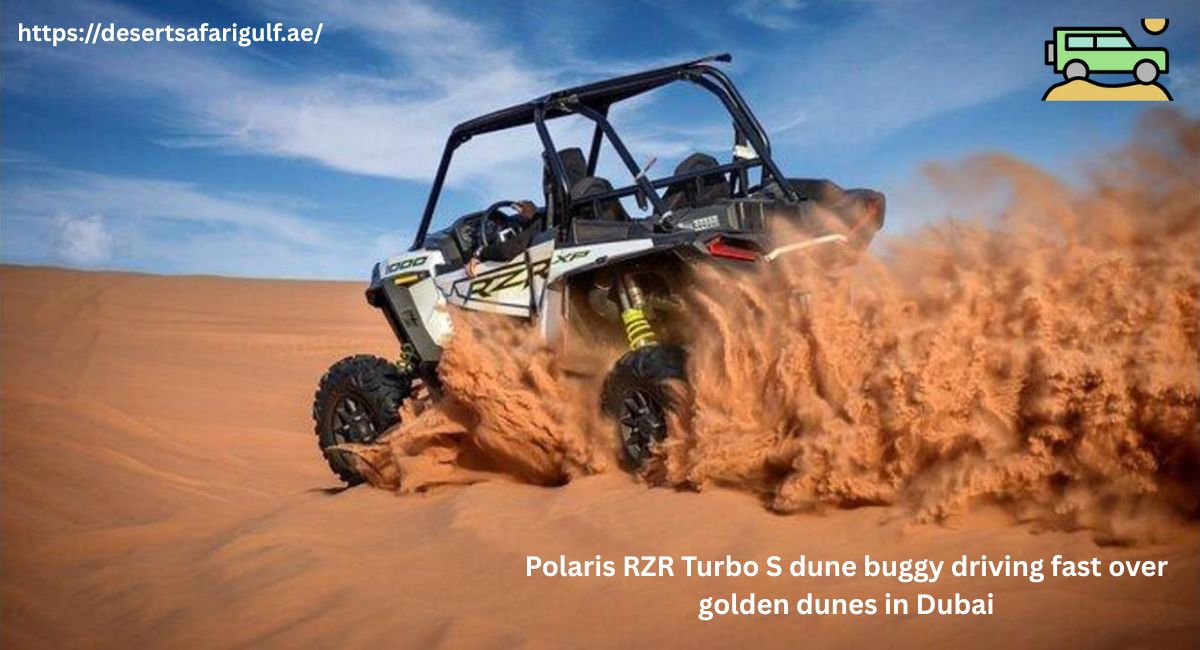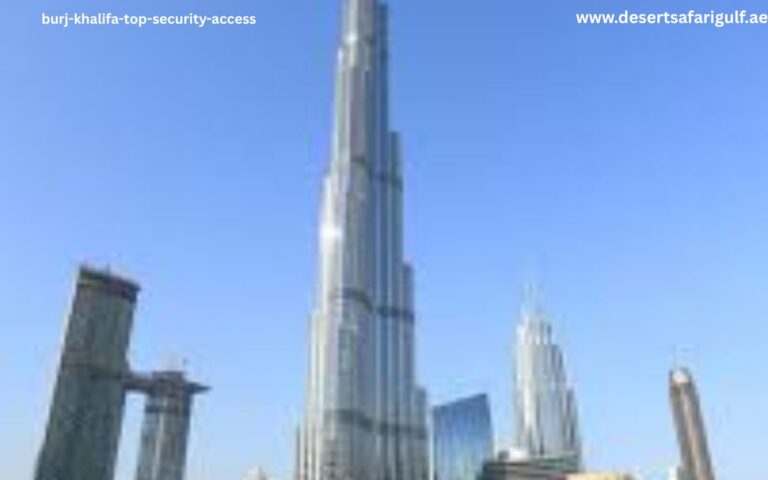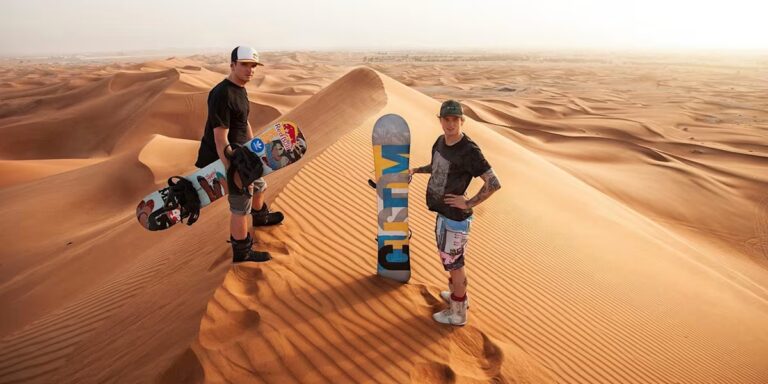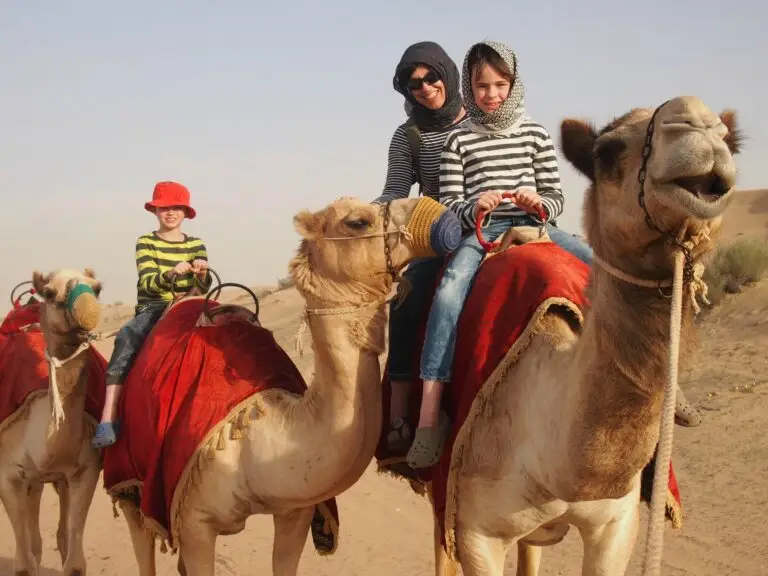Dune Buggy Adventures in Dubai – Where Speed Meets Sand
I remember the first time I hit the gas on a dune buggy in Dubai, no roads, no rules, just raw sand and rawer adrenaline. You feel it in your chest before you even move. The rumble of the engine, the heat bouncing off the desert floor, the guide yelling “Hold tight!” and then boom, you’re flying over dunes like it’s the last ride of your life.
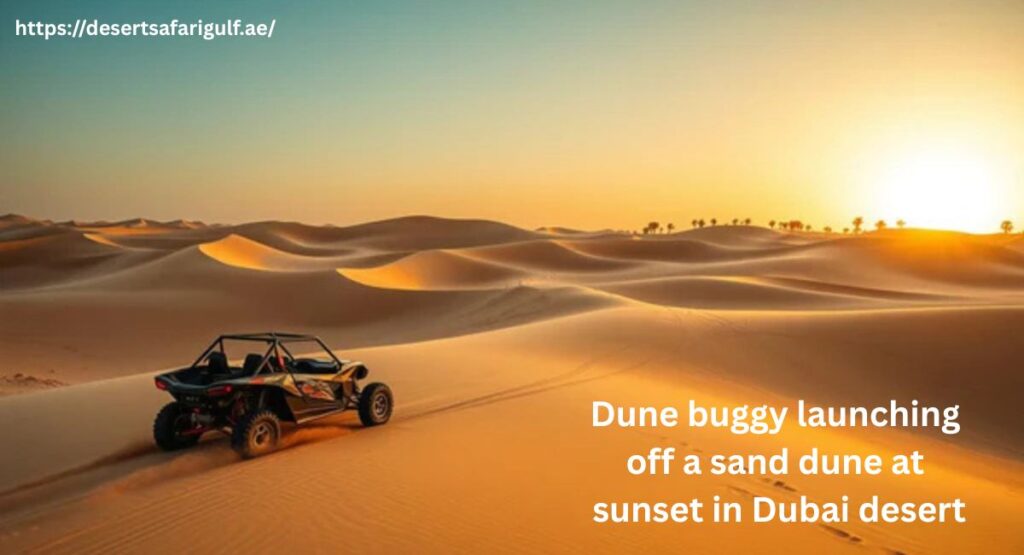
Now, here’s what most people always ask me after I post a reel: “how fast does a dune buggy go?” And it’s a fair question. They look fast, they sound fast… but what’s the real deal? Let me break it down for you, without any fluff or techy jargon. Just straight talk, from one speed junkie to another.
🚗 Dune Buggy Speed Breakdown, From Chill Cruising to Full Send Mode
You know what’s funny? Everyone thinks dune buggies are slow, like oversized go-karts just crawling through sand. Yeah, no. The first time I hit 70 km/h on soft dunes, my brain was yelling “This is it, we’re airborne!” And we almost were. On flat roads, 70 feels like a joke. But on sand? It’s like flying a rocket made of steel and guts.
So here’s the lowdown. If you’re riding one of those standard 800cc buggies, expect a smooth 60 to 80 km/h. It feels zippy without pushing you into panic mode, perfect if you’re out for views, not bruises. But if you book a high-performance beast, I’m talking Polaris RZR, Can-Am Maverick, or anything that purrs with over 1000cc, you’re looking at 100 to 120 km/h easy. That’s full-send territory. But don’t let the speed fool you, it’s not all gas and glory. One wrong shift on the wrong dune, and you’ll be chewing sand instead of grinning for selfies.
Engine Power Explained – What 800cc & 1000cc Really Mean
Let’s talk engine size, because that “cc” number everyone throws around? It ain’t just a flex. It’s your buggy’s heartbeat. I remember this one guy, a tourist from France, bragged about driving a 1200cc car back home. He jumped into an 800cc dune buggy and said, “This feels weak.” Five minutes later, he was screaming like a kid on a roller coaster. Turns out, cc hits different on sand.
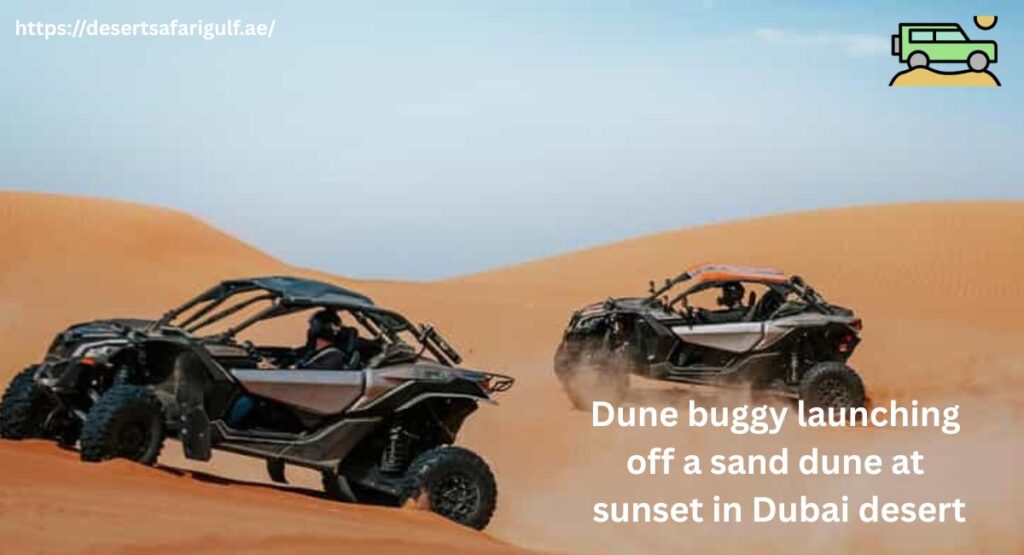
So yeah, 800cc buggies are the go-to for most desert rides, they’ve got enough horsepower to climb dunes, zip through valleys, and give first-timers a rush they’ll never forget. But once you taste that, trust me, you’ll want more. Enter the 1000cc club. These machines come with turbocharged grit, better suspensions, and the kind of torque that launches you up dunes like a missile. Not for amateurs. Not for folks who flinch. These are for the ones who want the sand to fear them back.
Dune Buggy Speed & Power Comparison: how fast does a dune buggy go
| Buggy Model | Engine (cc) | Horsepower (HP) | 0–60 mph (sec) | Top Speed (km/h) |
| Standard Buggy | 800cc | 75–100 HP | 7.0–8.0 sec | 60–80 km/h |
| Polaris RZR XP 1000 | 999cc | 110 HP | ~6.0 sec | ~105 km/h |
| Polaris RZR Turbo S | 1000cc Turbo | 168 HP | ~5.0 sec | 110–120 km/h |
| Can-Am Maverick X3 | 900cc Turbo | 120–200 HP | 4.5–5.0 sec | Up to 120 km/h |
| Yamaha YXZ1000R | 998cc | 112 HP | ~6.0 sec | ~100 km/h |
Top 3 Fastest Dune Buggy Models You’ll Find in Dubai
If you think all dune buggies are built the same, buckle up, because the ones tearing through Dubai’s desert are next-level. I’ve ridden with tourists, pro off-roaders, even influencers who only came for “aesthetic content” and ended up white-knuckling the wheel in pure terror, all thanks to these beasts.
1. Polaris RZR Turbo S, This one’s a legend. It’s like the sports car of the desert, only louder and dirtier. We’re talking about 168 horsepower and a suspension so smooth it glides over dunes like butter on hot toast. It’s a favorite for high-speed tours, and honestly, if you haven’t tried one yet… what are you doing?
2. Can-Am Maverick X3, Pure savagery. It’s built like a fighter jet with wheels. Turbocharged engine, lightning-fast throttle, and low-key one of the best for deep desert rides. This thing doesn’t care how steep the dune is, it just eats it for breakfast.
3. Yamaha YXZ1000R, Underrated but deadly. It’s got that aggressive growl and a rally-style gearbox that makes every gear shift feel personal. It’s lighter, super responsive, and loves airtime. If you’re the type who lives for that launch, this buggy won’t let you down.
And the best part? You don’t need to own one. You just need to know where to rent one, wink wink, Desert Safari Gulf has you covered.
What Really Affects Dune Buggy Speed in the Desert? (Spoiler: It’s Not Just the Engine)
Here’s the thing, everyone’s obsessed with engine size. “How many cc?” “Is it turbo?” But let me drop a truth bomb: your engine means jack if your tires are sinking in sand like marshmallows in hot cocoa. I’ve seen big guys in turbocharged beasts get outperformed by someone in a smaller buggy, just because they didn’t know the terrain.
Let’s talk tire pressure. In the desert, you actually deflate the tires a bit so they can float on the sand instead of digging in. It’s weird if you’ve never done it before, but trust me, it’s a game-changer. Next is sand type. Yeah, not all sand is the same. Some dunes are powdery and deep, some are packed like a dirt trail. That affects your grip, your bounce, your traction, basically, your speed.
And then there’s wind. Yup, desert winds can either push you forward like a gusty blessing or fight you tooth and nail, especially if you’re climbing tall dunes. Add in driver weight, suspension setup, and even how hydrated you are, and suddenly it’s not just a ride, it’s a desert dance.
🧯 Is Faster Always Better? Speed vs. Safety in Dune Buggy Rides
Look, I love speed. The engine roar, the blur of sand whipping past, the adrenaline when you’re mid-air for a split second, chef’s kiss. But let me be brutally honest: speed without safety is just chaos with a timer. I’ve seen riders go from “WOOHOO!” to “Oh no…” in less than 3 seconds, just because they forgot they weren’t on a racetrack.
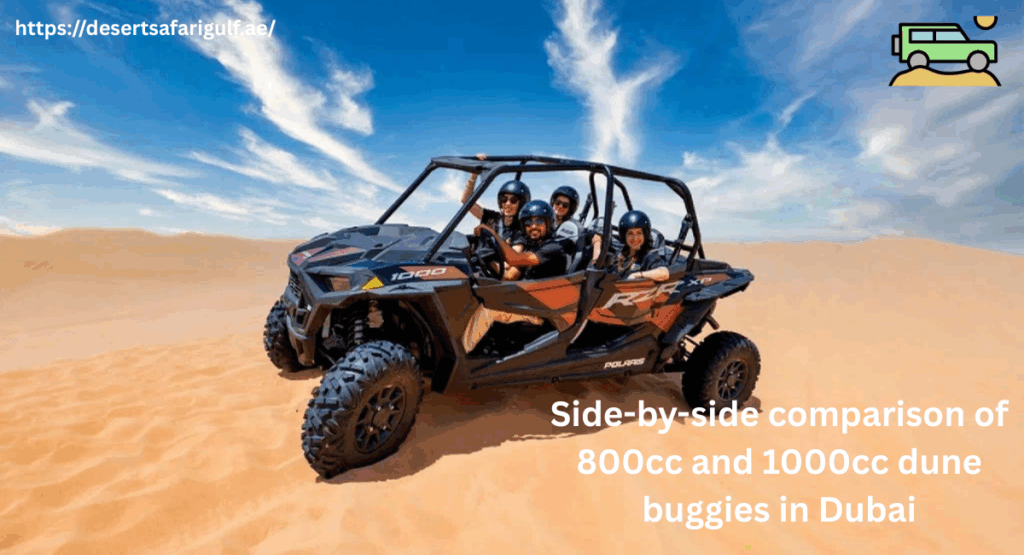
Out here, you’re not protected by airbags and steel cabins. I’ll be straight with you, I’m all about going fast. That rush when the engine growls and you blast up a dune? Man, it’s addictive. But I’ve also seen the flip side. I once watched a guy flip his buggy mid-turn because he misjudged a dip and tried to show off. Real story, no one clapped, just silence and dust.
Even pros keep their speed in check when hitting blind curves or steep drops. It’s not about showing off, it’s about getting back in one piece so you can ride again tomorrow. Real thrill is knowing when to push it… and when to pull back. You’ll still get your adrenaline fix, but without the broken collarbone. Trust me, I’ve been on both sides of that lesson.
Customization & Upgrades, Boosting Your Buggy’s Speed Safely
Now if you’re anything like me, once you ride a buggy and feel that engine purr, your brain starts whispering: “What if it was just a little faster?” Welcome to the rabbit hole of buggy upgrades, where power meets personality. But before you slap a turbo on everything, let’s talk smart mods.
Start with the basics. Air filters and exhaust upgrades can give your engine better breathing room, more air in, more grunt out. Throw in a performance ECU tune, and suddenly your buggy’s responsiveness goes from “meh” to “whoa!” But keep this in mind: every upgrade adds stress to something else. More speed means you need better suspension, beefier brakes, and stronger cooling, especially in Dubai’s brutal heat.
A friend of mine once added a turbocharger without upgrading the tires. Big mistake. He could accelerate like a rocket, but couldn’t steer for squat on soft dunes. Lesson? Don’t just upgrade for the gram, upgrade for control, safety, and a better ride. And hey, if you want a ready-made monster without the hassle, go for a pre-modified rental from someone who’s already done the dirty work, like Desert Safari Gulf. Trust me, they don’t play around.
Choosing the Right Buggy for Your Adventure Style (Beginners vs. Pros)
Here’s something folks often get wrong, they assume the biggest, baddest buggy is always the best choice. But desert driving ain’t a one-size-fits-all deal. Choosing the right buggy isn’t about ego, it’s about matching the machine to your mindset.
If it’s your first time out there, don’t jump straight into a 1000cc turbo beast. I’ve seen first-timers freeze mid-ride because the buggy felt too aggressive, too twitchy. An 800cc is honestly the sweet spot. It’s got enough kick to get your heart racing but gives you time to breathe, look around, and actually enjoy the view without white-knuckling the steering wheel.
Now, if you’ve done a few runs, handled a couple of steep climbs, and felt the buggy dance under you, it might be time to level up. 1000cc+ models are built for those who want to carve through dunes like they own the place. Better shocks, faster throttle, sharper control. It’s the difference between driving and commanding. But remember, power’s no fun if you can’t handle it. Ride what fits you today, not what you think will impress your Instagram.
Ready for the Thrill? Book Your Desert Safari Now!
Final Verdict – How Fast Do You Really Need to Go?
Let’s be real for a sec. After all the horsepower talk, tire pressure tips, and mod suggestions, you might still be wondering, “So… how fast should I go?” And the answer? As fast as you can handle while still smiling.
I’ve ridden buggies at 60 km/h that felt like roller coasters from the future, because the dunes were steep, the wind was wild, and my adrenaline was maxed out. I’ve also hit 110 km/h on flat stretches where the buggy felt like it was floating. But speed isn’t the goal. The thrill is. It’s that mix of fear, freedom, and laughter that makes it worth every grain of sand in your shoes.
So no, you don’t need to hit top speed to have the ride of your life. What you need is the right buggy, the right terrain, and a little bit of reckless joy. Whether you’re a cautious cruiser or a full-send daredevil, the Dubai desert will meet you where you’re at. Just don’t forget to breathe, yell a little, and let it rip.
Book Now: Get a free quote

